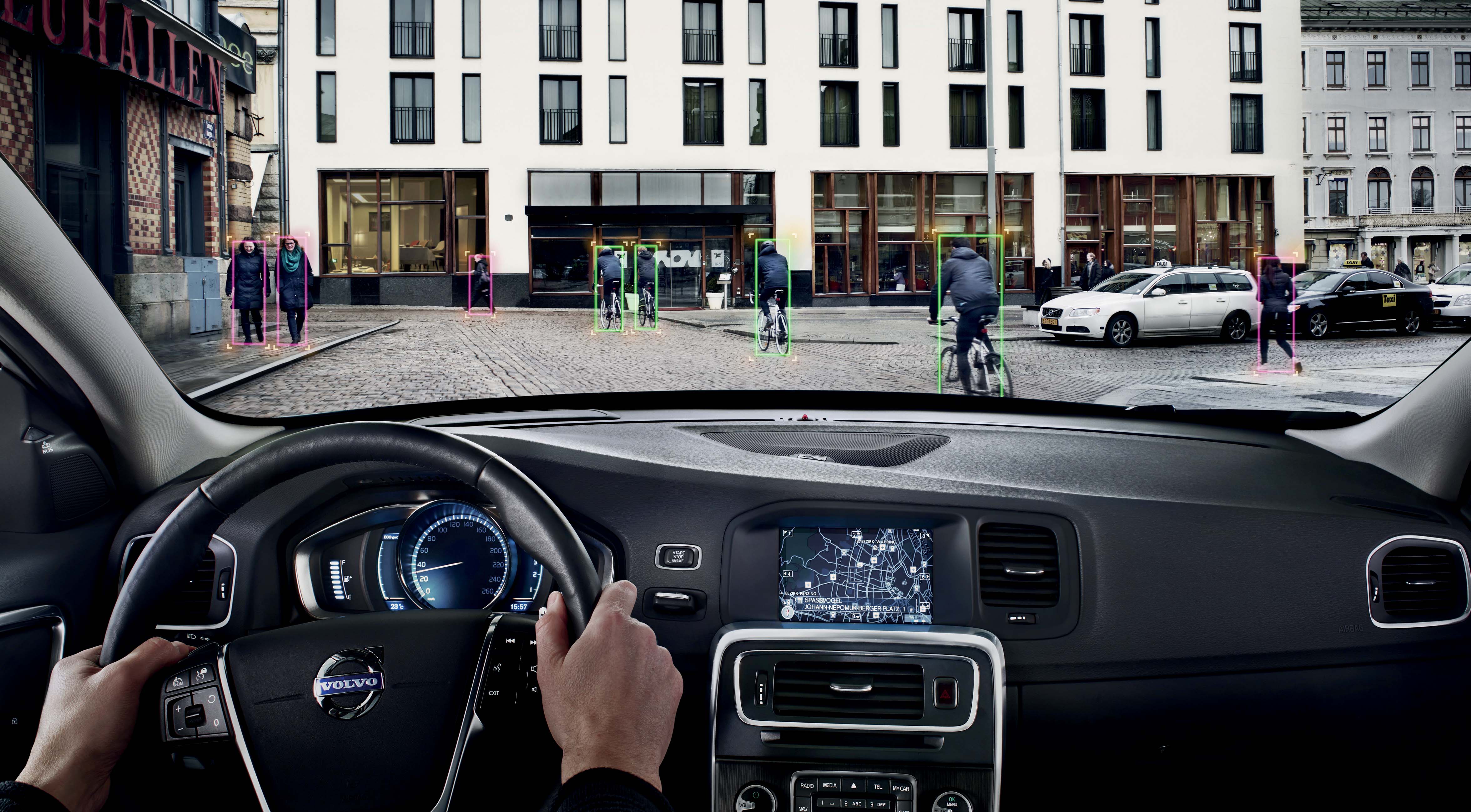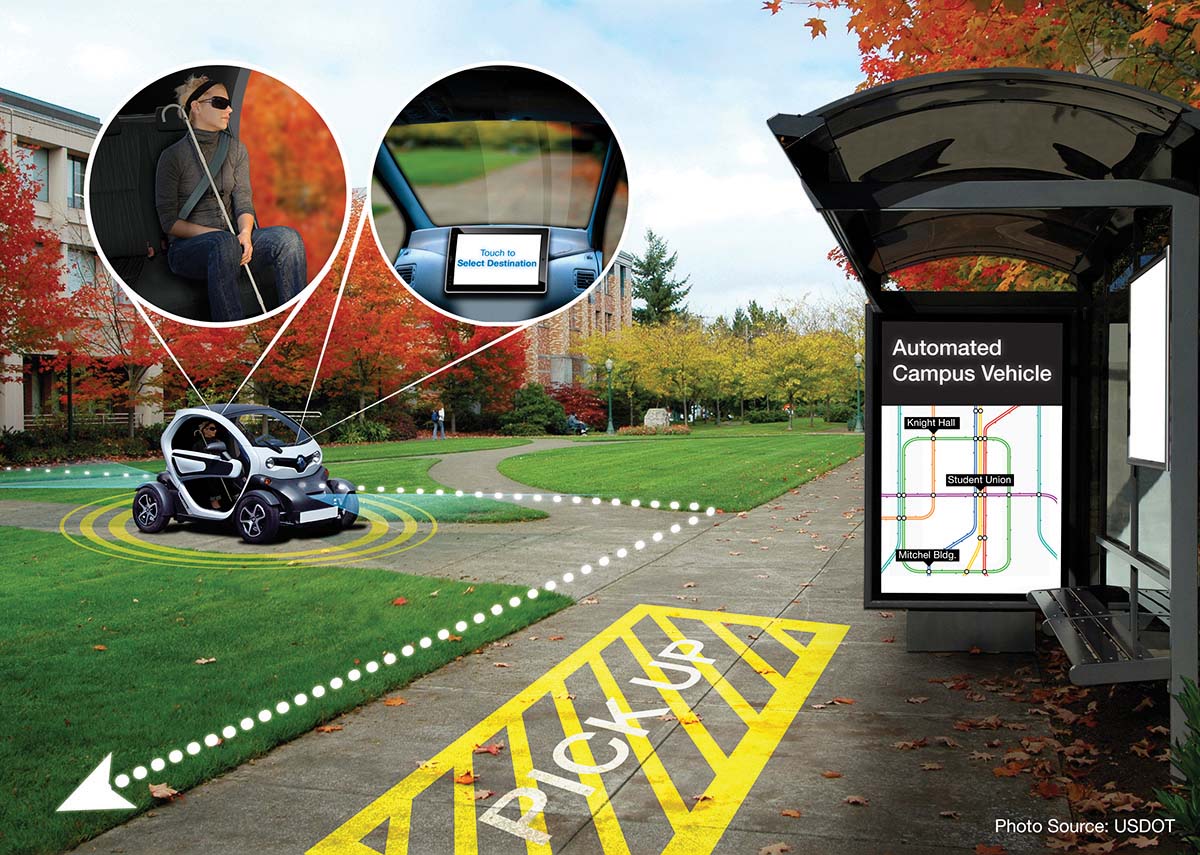
Colin Sowman gets the global view on how ITS has shaped the way we travel today and what will shape the way we travel tomorrow.
Over the past two decades the scope and spread of intelligent transport systems has grown and diversified to encompass all modes of travel while at the same time integrating and consolidating. Two decades ago the idea of detecting cyclists or pedestrians may have been considered impossible and why would you want to do that anyway? Today cyclists can account for a significant proportion of rush-hour city commutes and their needs are becoming a mainstream consideration in traffic planning. New technologies and systems, often from start-up companies, have been introduced one year and become part of the mainstream within the next five, and often the manufacturer has been swallowed up by a large organisation aiming to offer authorities a one-stop shop.
The technology itself has become increasingly capable and effective to a point that it is difficult to comprehend what the travel situation in many cities and highways would be like without ITS. And while systems have become more robust, this growing reliance on ITS leaves cities vulnerable to mass disruption if these systems fail or are disrupted – unintentionally or otherwise.
So where do you even begin to assess which have been the major influences that have shaped ITS over the past 20 years to get to this point, let alone which ones will most influential over the next two decades? To get an unbiased view we asked
ITS Japan’s chairman, Dr. Hiroyuki Watanabe, puts Traffic Control at the top of his list of existing ITS measures that have influenced today’s world – which is reflected by ERTICO’s Hermann Meyer who cites Traffic Management.
“Traffic Control Systems have achieved both mitigation of traffic congestion and repression of traffic accidents,” says Dr.
Watanabe. “Estimates show that if such systems had not been introduced, the traffic congestion would have increased by 30% over the past 20 years and effectively vehicles would have stopped moving when congestion exceeded the certain level.”
For his part Meyer says: “Traffic management is a key aspect where ITS is making a big difference. I think the main benefit of these technologies is that existing infrastructure is used in a more efficient way, and traffic flows are better managed. When this happens, traffic safety and environmental quality are also reinforced.
“Today’s traffic management centres have evolved greatly since the early days and they now rely on information from cameras and other sensors which are infrastructure based. If ITS solutions were not implemented, there would be more congestion, CO2 emissions, fatalities and injuries.
“Today’s systems allow drivers and travellers to receive information about the traffic status quo and in the future traffic management centres will not only receive information from the infrastructure but also from vehicles and travellers. They will even have predictive information and related services which will allow enhancement of the driver assistance and support.”
Tom Kern, interim president and CEO of ITS America, has a different take on the last two decades of ITS dividing it into three eras, starting the in ‘90s with research. “The technologies in those days were not highly advanced as they are now – they were narrowly focussed and limited in their deployment. To overcome this, the Transportation Bill passed in 1991 not only contained a commitment to research necessary to build the framework for today’s ITS solutions, it also contained language to create ITS America itself as an advisory organisation designed to offer guidance and feedback to the USDoT on transportation technology matters. This was, and still is, unusual for Congress to do, but what it did was to underscore the importance of the technology; that we needed to infuse our transport solutions with the emerging technology.
“That need for research never goes away. We can’t assume that we can do research in the lab and then think it is done, as we further enhance the technology solutions that emerged over the last couple of decades.”
He characterises the second era as ‘collaboration in the field’. “This is not a government initiative or one driven by the private sector or academia or even one solely focused in North America; it is a full bore collaboration across all of these sectors. This is not just a government or academic initiative, a lot of development has come from the private sector and that collaboration is key to moving projects and technology out of the labs and into the deployment phase.”
Tipping point
He encapsulates the last of his three eras in saying: “Today it is important to recognise that we are now at a moment in time where the technologies are here. Very often there is a conversation about reaching a tipping point or horizon; well we have reached that and today’s ITS community is living the dream. Solutions to solve the challenges around connected vehicles, the role of infrastructure and the ability to manage the capacity have unfolded over the last few years and are being refined to make transportation a more successful venture for people.”
This theme is in line with Meyer’s thinking: “The demand for mobility is on the rise. Companies want goods to come to the plant just-in-time while citizens buy more and more goods via the internet, boosting the need for decentralised freight transport. Scarce resources and space limitations make expanding infrastructure a non-viable solution. On the contrary, ITS technologies are available now to tackle these challenges in a more cost-effective way.”
In particular he highlights online travel planning and travel information saying: “Even though there is no harmonisation of the different modes of transport in the different European countries, online travel planners have had a huge impact on the way people get from point A to point B. The fact that you can book your flight or your train ticket online and check the most convenient route on public transport in any given city, among other possibilities, has completely changed the travel experience of European people.
“If this technology had not have been introduced, people would still be travelling as they did in the past, with a higher level of uncertainty and the need to go to information and purchase points, with the subsequent time investment. Nowadays, online travel planners and travel information make it possible for people to arrange all the travelling details from the comfort of their sofas and laptops in a very short time.”
Traffic information also ranks as one of Dr. Watanabe’s the key themes: “The vehicle information and communication system is famous in Japan. The service disseminates probe data of private companies and proved its worth in 2011 when it was a key element in route guidance during the Great East Japan Earthquake.”
Probe Data
He also cites mainland China where the staging of the Beijing Olympic Games provided the spur to start incorporating taxi probe data in the traffic information system and in Thailand taxi probe data is being utilised in Bangkok’s traffic information system. Indeed Dr. Watanabe says this practice is spreading across the Asia-Pacific region - and without public investment.
A shortage of public funds is also the prompt for Dr. Watanabe to add electronic toll collection (ETC) to his list of key technologies, saying: “Considering the worldwide financial trouble and difficulty in investing the road infrastructure, ETC is an important tool to realise both traffic decentralisation and the control of traffic flow (implementation of traffic policy) through the existing infrastructure by electronic control. ETC has solved congestion at toll gates and Electronic Road Pricing (ERP) in Singapore is the symbolic representation of how such a system can work.”
Reflecting the European perspective, ERTICO’s Meyer adds satellite navigation to his top three list, saying: “Having a navigation system in the car has made a significant contribution to easing the travelling experience of Europeans. Without satellite technology based on positioning, maps and traffic information, we would still be relying on our sense of orientation or paper maps that were not necessarily updated. We would not know about alternative routes in case of a road closure or if there is an accident. Travelling would take on average much longer than it does nowadays.”
Thoughts about which will be the key technology trends going forward are equally as diverse with the participants reflecting the needs of their respective continents. For Europe Meyer singles out communications technology and cloud computing along with sensor technology and digital mapping. Kern feels integration, automation and autonomy will have a greater influence in North America while in Asia Pacific Dr. Watanabe champions ADAS, energy optimisation and ‘big data’.
Meyer explains what lies behind his selection: “We are moving towards mobility as a service but at the moment transport is very mode-centric although some forward-thinking city authorities are already looking at integrated mobility. We are seeing the introduction of unified ticketing systems that allow travellers to use the same ticket to access different means of transports and this is the beginning of an integration process that is very likely to continue.
“In the future instead of looking at individual modes of transport we will look at the whole value chain and the traveller will have a service provider who will offer services that match their individual mobility needs - quite possibly in the form of mobility packages. So instead of owning a car and using public transport every now and then, we will have mobility packages that include the use of car-sharing systems, buses, bicycles, taxis, rail... which could well be paid for via a single monthly invoice.”
Low-tech
He believes the benefits of such moves can be equally applied to the movement of goods: “Freight transport will also benefit from the connection between different modes of transport. Freight is basically a low-tech industry to transport goods by land, sea and air and if there was a more integrated way to doing this, the result would be fewer delays and more profits.”In identifying the key trends going forward, Meyer starts with communication technologies which he says has already had an enormous effect on the ITS industry. “We see this with cellular communication where 4G is already providing new opportunities for ITS and there will be another huge step with the implementation of 5G. Step by step we will move towards the Internet of Things.
“Looking forward we also see the use of Wi-Fi for vehicle to vehicle and vehicle to infrastructure communication making vehicles safer and journeys more comfortable. This will introduce the potential for broadcasting by the authorities and/or service providers to convey more specific and accurate information to the drivers in the future.”
Meyer cites cloud computing because it “will provide opportunities for storing and processing a vast amount of data, which is not possible with existing technologies. This will lead to a situation in which the traveller and the driver will benefit from services that come from the cloud. Data will be transformed into information and knowledge to support drivers and travellers throughout their journeys.”
Data, in this case ‘big data’ also features large in Dr. Watanabe’s vision of the future: “Big data has a potential to benefit both the individual and the public as a whole. By utilising big data on transportation and delivering the results through ITS, this will improve efficiency in movement of people and freight.”
He also makes the point that the benefits of big data extend far beyond transport. “Different kinds of information are shared and exchanged within regional society, so that it becomes a society that gives rise not only to official assistance, but also to self-help and mutual aid within local areas. This society also realises mechanisms that provide mobility to residents who have come up against disaster or various kinds of disorder in society, so that they can move or evacuate promptly and appropriately.”
In continuing the theme of wider society gains, Dr. Watanabe highlights optimising energy use in his list of key themes that will shape the future, saying: “As electric vehicles become more common, their rechargeable batteries will be a valuable tool in energy demand management for households and local communities. Motor vehicles will no longer just consume energy, they will play key roles in regulating supply and demand. The electric power consumed by motor vehicles, residences, and business establishments will be managed at the level of the local community or region as a whole. The aim will be to reduce wasteful consumption of electric power in order to achieve optimal energy consumption.”
Perhaps for different reasons, both Kern and Dr. Watanabe identify the increase in driver assistance and the eventual move to autonomous vehicles. But before happens, in such a large country as America, Kern sees there is first a need for the emerging ITS systems to be integrated across all communities and not just in the cities or on the interstates. “Big cities like New York have the technology to help deal with congestion and allow pedestrians to cross the road in safety. But there are many fatalities on rural roads, so we need to see ITS technology being deployed in suburban and rural roads too.
“We will see this integration, whether it is state or regionally focussed, which will enhance the ability of public agencies and their partners to manage traffic more holistically and this will be an important step in the overall scheme of things.”
Connected vehicles
He then identifies the roll-out of connected vehicle technology both in its own right and as a vital step on the way to fully autonomous vehicles. “This will further improve our ability to make decisions – both those managing the system making corporate or strategic decisions on the use of capacity or individual travellers deciding on the best way to get to work. And we don’t need every vehicle to be connected; the output is statistically accurate even if only 3% or 4% of vehicles are connected.”
Mindful of Japan’s ageing population, Dr. Watanabe puts advanced driver assistance systems (ADAS) and automated driving systems at the top of his list of technology that will change lives in the decades to come. “Nine out of ten traffic accidents result from human factor. Providing drivers with ‘blind-side’ information through advanced sensor and communication technology is expected to reduce traffic accidents by 60-80%.
“Computer modelling predicts that a smooth flow of vehicles created by the combination of connected and automated technology will halve the length of traffic queues. In Japan the ageing of society has progressed and it is quite essential that the mobility of elderly people is assured in order for them to participate actively in society. Automated driving technology is expected to achieve that role. In the technology field, the big revolution is going to happen in the area of sensor, communication and mapping.”
Sensor technology and digital maps also feature on Meyer’s list and not only because they are a prerequisite for automated vehicles, but because they extremely useful for a variety of other transport-related uses. “Digital maps will evolve, gain more and more accuracy and will be updated in real time. This will be possible thanks to data exchange among all the entities collecting information, such as sensors and cameras in vehicles.
“The availability of this information flow will in turn support the development of automated driving. Vehicles will have more and more automated functions until we reach a situation where the vehicle has become fully automated.”
This inevitably brings the topic back to autonomous vehicles which is a destination all of our participants identify – albeit Kern thinks this may not happen in any scale as soon as some people think. “I’m struck by the fixation on automation as though we have ‘done our job’ on connected vehicle and connected infrastructure. Connected infrastructure needs to be well in play before the automation conversation can be fully fleshed out but many are already looking at the wonderful solution that is autonomous vehicles. By 2035 we will of course see automated vehicles on the roads but they will be alongside people driving their car in the traditional fashion – it won’t be the flick of a switch and everybody is driving an autonomous vehicle. There will have to be a lot of exploration to get from here to there and figure out how all this fits together.”
And that may well take the next 20 years –maybe even longer.










